You may have noted that the D3004/660000 Tweeter (D30 for short) is still listed as NEW - it has not yet been referred by the "Revelator" moniker, although they say its research is based on the R2904 (R29 for short) Revelator.
www.tymphany.com/datasheet/printview.php?id=55
Being a consultant I have been loaned a pair of D30 and told that it is only one of two pairs here in Australia. They look like this:
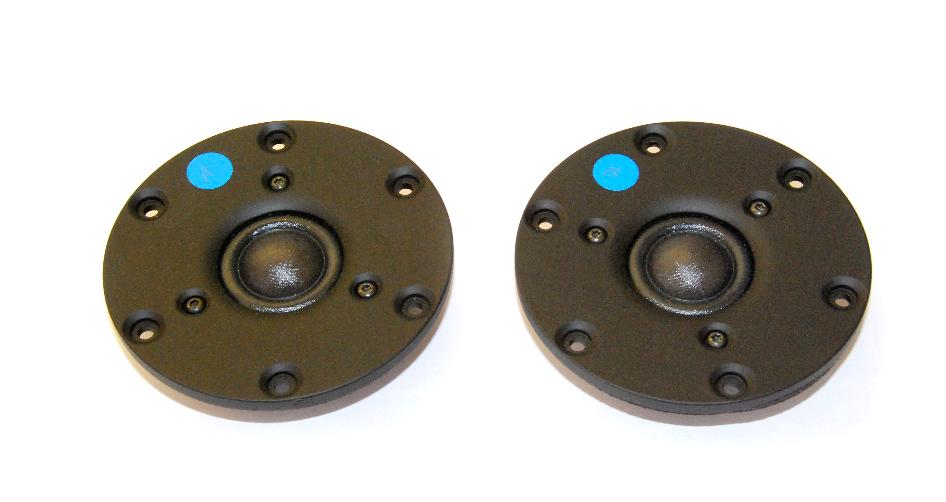
The most amazing look is the rear:
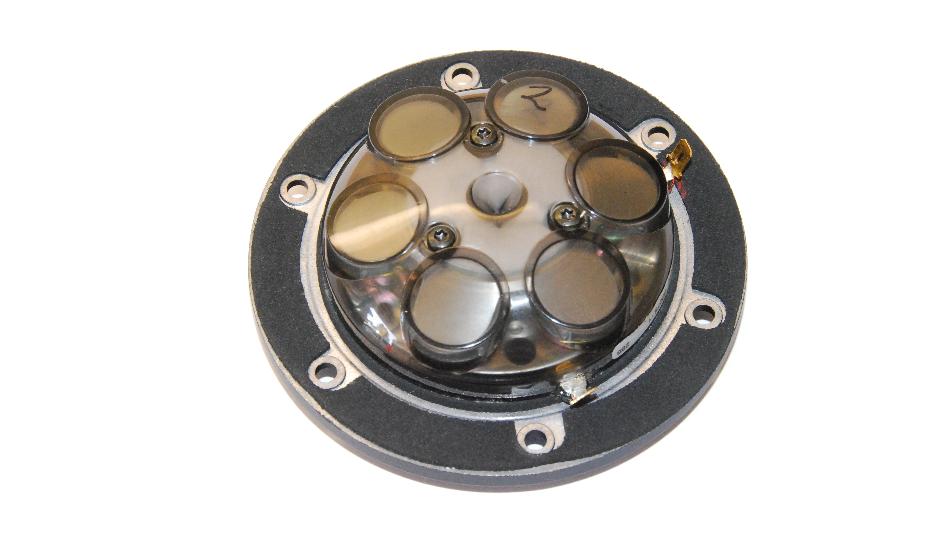
The distortion tests, Sample A and Sample B, measure slightly oddly compared to any tweeter tests I've done before:
Sample A:
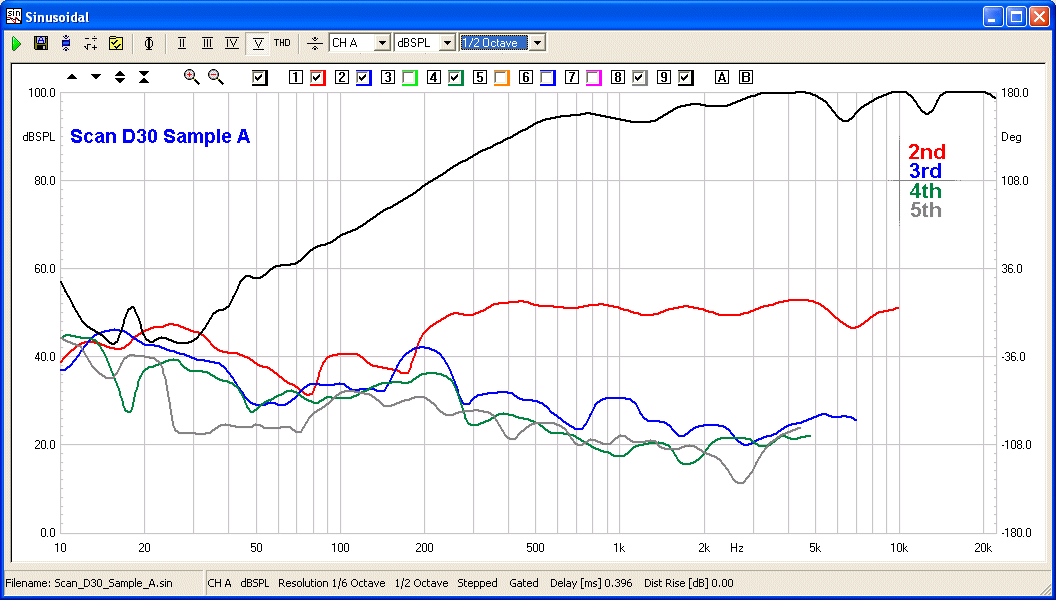
Sample B:
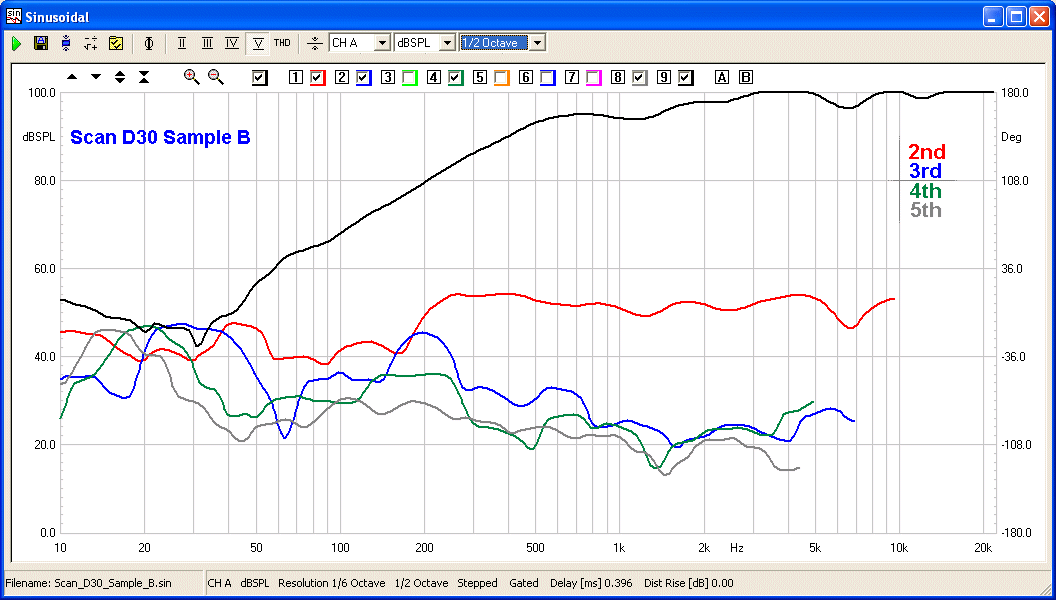
There is more than reasonable consistency between samples, high order distortion 3-5 are very well suppressed, but 2nd harmonic is rather prominent and curiously flat over much of the working range of the tweeter. Maybe this is on purpose and designed to give this tweeter a certain 'sound'?
Now compare this with my current fave tweeter the NEW Peerless HDS 810921:
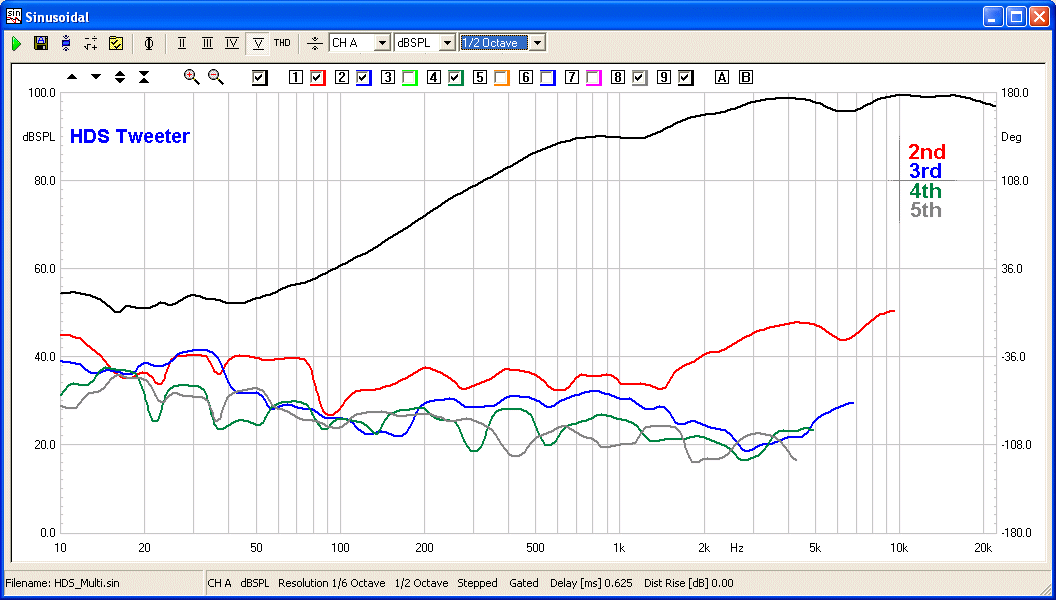
High order is as good as the D30, but 2nd harmonic is much better suppressed. I would be interested in hearing others interpretations of these measurements.
The Peerless HDS deserves to be adopted by the DIY fraternity. I don't know what the cost of the D30 will be but I suspect double or maybe more than the HDS.
I have not yet heard the D30 but have been using the HDS in my Elsinore Project speakers for about a month now and they continue to delight and even amaze me.
Test conditions: Mic 125mm from flush mount, gated sinusoidal, reference level 100dB. Please note 100dB is @ 125mm which is equivalent to 82dB @ 1 Metre. The reference level (black line) should not be taken as the frequency response of the drive unit as 125mm is chosen to be near optimum to measure distortion and NOT frequency response. Also, 100dB at the mic is well within its overload margin. After all, we don't want to measure the mic's distortion, right?
Joe R.
www.tymphany.com/datasheet/printview.php?id=55
Being a consultant I have been loaned a pair of D30 and told that it is only one of two pairs here in Australia. They look like this:

The most amazing look is the rear:

The distortion tests, Sample A and Sample B, measure slightly oddly compared to any tweeter tests I've done before:
Sample A:

Sample B:

There is more than reasonable consistency between samples, high order distortion 3-5 are very well suppressed, but 2nd harmonic is rather prominent and curiously flat over much of the working range of the tweeter. Maybe this is on purpose and designed to give this tweeter a certain 'sound'?
Now compare this with my current fave tweeter the NEW Peerless HDS 810921:

High order is as good as the D30, but 2nd harmonic is much better suppressed. I would be interested in hearing others interpretations of these measurements.
The Peerless HDS deserves to be adopted by the DIY fraternity. I don't know what the cost of the D30 will be but I suspect double or maybe more than the HDS.
I have not yet heard the D30 but have been using the HDS in my Elsinore Project speakers for about a month now and they continue to delight and even amaze me.
Test conditions: Mic 125mm from flush mount, gated sinusoidal, reference level 100dB. Please note 100dB is @ 125mm which is equivalent to 82dB @ 1 Metre. The reference level (black line) should not be taken as the frequency response of the drive unit as 125mm is chosen to be near optimum to measure distortion and NOT frequency response. Also, 100dB at the mic is well within its overload margin. After all, we don't want to measure the mic's distortion, right?
Joe R.
Hi Joe,
Thanks for the measurments.
I'm not sure if it's been engineered to give relatively high H2, but if those measurements are accurate and anything to go by (I see no reason why not), the Aircirc should probably deliver "musical tube-like treble"
On the other hand, both John Krutke and Mark K's measurements did not show this phenomenon. All HD components were very low, including H2.
Mark K's findings-
http://www.markk.claub.net/Testing/SS6600_peerlessHDS/SS6600_PeerlessHDS.htm
John Krutke's findings-
http://www.zaphaudio.com/tweetermishmash/compare.html
Btw do you know the production date of that pair of 6600 tweeters?
There was a brief hiatus in production, and there has been no North American stock for over 6 months. I'm wondering if you tested an early (06) sample or recent 07 sample, and even if there are even any differences.
Thanks for the measurments.
I'm not sure if it's been engineered to give relatively high H2, but if those measurements are accurate and anything to go by (I see no reason why not), the Aircirc should probably deliver "musical tube-like treble"
On the other hand, both John Krutke and Mark K's measurements did not show this phenomenon. All HD components were very low, including H2.
Mark K's findings-
http://www.markk.claub.net/Testing/SS6600_peerlessHDS/SS6600_PeerlessHDS.htm
John Krutke's findings-
http://www.zaphaudio.com/tweetermishmash/compare.html
Btw do you know the production date of that pair of 6600 tweeters?
There was a brief hiatus in production, and there has been no North American stock for over 6 months. I'm wondering if you tested an early (06) sample or recent 07 sample, and even if there are even any differences.
tktran303 said:
Btw do you know the production date of that pair of 6600 tweeters?
There was a brief hiatus in production, and there has been no North American stock for over 6 months. I'm wondering if you tested an early (06) sample or recent 07 sample, and even if there are even any differences.
Yep, Mark and John tested these in the middle of last year. I presume the samples they had were amongst the first. Although not bad results that Joe has posted they aren't inline with John's or Marks so I have to assume that the measurements shown here are of an inferior production model, not so controversial when you consider they went AWOL for 6 month due to what I've seen widely claimed as 'production issues'.
I don't have any reason to doubt either Joe's, Mark's or John's testing methodology and since the HDS, also included in the measurements shown in this thread, was used to draw a comparison that further reinforces the idea of latest 6600 not being the equal of the first batches released mid last year.
I was quite taken by the results that John and Mark posted and shortly afterwards I tried for a couple of months to source a pair with no success. I'd like to see John revisit his tests with a later production sample just to be sure but I'd say this looks to be merely a good dome tweeter now rather than the class leader it showed last year.
It bodes well for the HDS which is cheap and looks to be the new performance king in dome related circles.
I'll close by saying there's a lot of speculation on my part so I wouldn't pay too much attention, I'm just speaking out loud.
My interpretation of the measurements would be that it doesn't really matter. You are not going to use either tweeter below about 1.5KHz and that would be with at least 4th order roll-off. Looking only from 1.5KHz up, they are about equal. The HDS is better from 2KHz down.
So yes, the HDS looks to be a brilliant tweeter, especially for the cost. I would use it if I was looking for a no-compromise dome tweeter.
Of course something like the RAAL Shinobiwan just got is even better again
Still I think a lot depends where your Xover is. IMO if you are crossing at more like 5KHz or up, there are many tweeters that have top-notch performance on par with the HDS and ScanSpeak for a lot less, like the Seas metal domes.
So yes, the HDS looks to be a brilliant tweeter, especially for the cost. I would use it if I was looking for a no-compromise dome tweeter.
Of course something like the RAAL Shinobiwan just got is even better again
Still I think a lot depends where your Xover is. IMO if you are crossing at more like 5KHz or up, there are many tweeters that have top-notch performance on par with the HDS and ScanSpeak for a lot less, like the Seas metal domes.
Tenson said:Of course something like the RAAL Shinobiwan just got is even better again
Your going to get me into trouble
That's a definite IMO situation. Which pretty much secures immunity from those inclined otherwise.
tktran303 said:There was a brief hiatus in production, and there has been no North American stock for over 6 months. I'm wondering if you tested an early (06) sample or recent 07 sample, and even if there are even any differences.
Without revealing confidences, I was told in January there was a delay and they arrived in February as I understand it. The delay had something to do with the 'finishing' - whatever that means? So these are actual NEW production samples. Whether that explains the difference between earlier (and pre-production it seems) and these current units, that is a definite possibility.
I am very confident of the measurement. When I saw it first time I was struck by what I saw, so the second sample was useful. I repeated the measurement on both samples and also other tweeters, such as HDS, as 'controls' - and all was consistent.
What I wonder is this: Is it deliberate? If so, what will they sound like? And will future samples be alike? It may be months, but I am likely to get my hands on other samples, those questions will find an answer.
In the meantime I hope many here will get to try the Peerless HDS. I look forward to their comments.
Joe R.
.
Clearly there's an asymmetry between push and pull. And it's pretty consistent with frequency above 200 Hz. Suspension? It would be interesting to see the detailed geometry, including the magnetic system.
edit: How does the 2nd HD vary with level? That could pin down the mechanism.
edit: How does the 2nd HD vary with level? That could pin down the mechanism.
SY said:Clearly there's an asymmetry between push and pull. And it's pretty consistent with frequency above 200 Hz. Suspension? It would be interesting to see the detailed geometry, including the magnetic system.
edit: How does the 2nd HD vary with level? That could pin down the mechanism.
Hi Stuart, OK will try different (lower?) level asap and report back. I have to watch out overloading the mic and also balance against ambient noise. With existing test conditions it is consistent to at least minus -80dB with relation to reference level 0dB = 100dBSPL seen by the mic.
BTW, the day after the sun came out and I enjoyed a whole day in Amsterdam, roaming the canals, taking pics with my trusty Nikon. The sun disappeared the following day - but I was on a train back to Copenhagen. So I got lucky.
Joe R.
................................

tktran303 said:On the other hand, both John Krutke and Mark K's measurements did not show this phenomenon. All HD components were very low, including H2.
Mark K's findings-
http://www.markk.claub.net/Testing/SS6600_peerlessHDS/SS6600_PeerlessHDS.htm
John Krutke's findings-
http://www.zaphaudio.com/tweetermishmash/compare.html
The Zaph measurements show some interesting phenomena common to some recent tweeters: the SS 7100 and the Seas Crescendo both have a 2 dB step between 2 and 3 kHz, which also shows up as a ridge of delayed energy in the CSD measurements.
Amusingly enough, the Millennium still seems to have the overall cleanest CSD: despite some minor ridges here and there, the worst of its sins is better than the worst of the new tweeters even though the new ones might have ranges where they're better. Perhaps that might account for its ongoing popularity.
Tenson said:Yeah, but I happen to agree with you
Off topic but I'll be very quick.
Welcome to the club.
Actually what I see in these measurements is mainly that the H2 follows the fundamental fairly closely in both tweeters, down to 1 kHz.
The HDS's FR drops below 2k and so does its H2 - therefore the *relative* H2 is fairly constant. The SS's FR is fairly flat down to 1k and so is its H2 - so the *relative* proportion of H2 is also constant. H2 looks higher in the SS belwo 2k, but again this may be an artefact of the higher level fundamental of the SS in this frequency region.
Below 1k the *relative* H2 rises in both the HDS and the SS, if you take the difference between fundamental and harmonic.
So basically to make sense you'd have to compare at equal SPL for each frequency, and express the harmonics as a percentage, or a dB difference.
The HDS's FR drops below 2k and so does its H2 - therefore the *relative* H2 is fairly constant. The SS's FR is fairly flat down to 1k and so is its H2 - so the *relative* proportion of H2 is also constant. H2 looks higher in the SS belwo 2k, but again this may be an artefact of the higher level fundamental of the SS in this frequency region.
Below 1k the *relative* H2 rises in both the HDS and the SS, if you take the difference between fundamental and harmonic.
So basically to make sense you'd have to compare at equal SPL for each frequency, and express the harmonics as a percentage, or a dB difference.
Hi,
With all your interests in the HDS tweeter, I am tempted to try it. I looked at the datasheet from the Tymphony site, and it does not have the impedance marks on the impedance curve! How do I use the tweeter then?
Anyone has the FRD and ZMA files? or the datasheet with the impendance curve and the marks?
Thanks,
Bill
With all your interests in the HDS tweeter, I am tempted to try it. I looked at the datasheet from the Tymphony site, and it does not have the impedance marks on the impedance curve! How do I use the tweeter then?
Anyone has the FRD and ZMA files? or the datasheet with the impendance curve and the marks?
Thanks,
Bill
Zaph has a plot with impedance. You'd be able to create ZMA files from that.
http://www.zaphaudio.com/tweetermishmash/fr.html
http://www.zaphaudio.com/tweetermishmash/fr.html
LaMa said:To add to the confusion, my HD measurements (not shown) of early 2006 samples produce HD2 at -50 dB below response, HD3, HD4 > 60 dB. All measurements performed with Praxis. Therefore my results are in line with those of Zaph and Markk whom also tested early versions.
I shall repeat the tests later today and post in 24 hours. I will try different levels. The earlier test was 100dBSPL @ 125mm = 82dBSPL @ 1 Metre (approx 100mW). I have in mind at least trying -/+ 6dB. The rough range will be equivalent to 25-400mW. I know the setup will handle that range (pushing the mic to see 106dBSPL), but since we're mainly concerned with strange h2 behaviour around - 50dB and the rig is good to at least -80dB, should be able to explore that downwards (it's the ambient noise limitation).
Will the pattern be consistent? Please keep in mind, these are the only tweeters I have seen that looks like this (it struck me the first time I saw it - is it deliberate?) and various other tweeters, including HDS (which I will use as a control again) are much more conventional.
As other current production samples become available to others with Praxis, SE etc able to do the tests, we may not become the wiser?
Joe R.
Hi Joe,
Thanks for posting the test results. As far as I can tell, you're the first to test one of the new versions. I'll be paying close attention to any other results you post. I'd be especially grateful if you could post an accurate unsmoothed response plot, either infinite baffle or a well defined baffle of some type. If you have the ability to test for sensitivity, it would also be good to know what the 2.83 V SPL is.
Regards,
John
Thanks for posting the test results. As far as I can tell, you're the first to test one of the new versions. I'll be paying close attention to any other results you post. I'd be especially grateful if you could post an accurate unsmoothed response plot, either infinite baffle or a well defined baffle of some type. If you have the ability to test for sensitivity, it would also be good to know what the 2.83 V SPL is.
Regards,
John
- Status
- This old topic is closed. If you want to reopen this topic, contact a moderator using the "Report Post" button.
- Home
- Loudspeakers
- Multi-Way
- New Scan-Speak D3004/660000 Distortion Tests